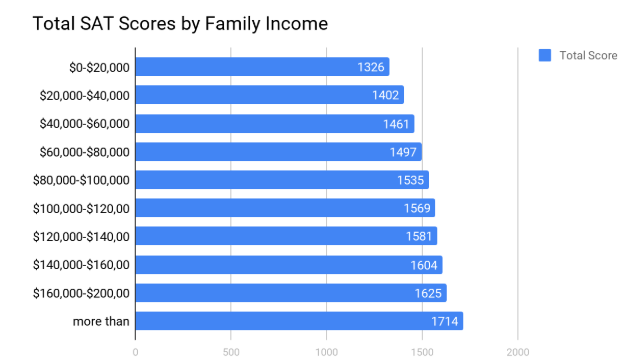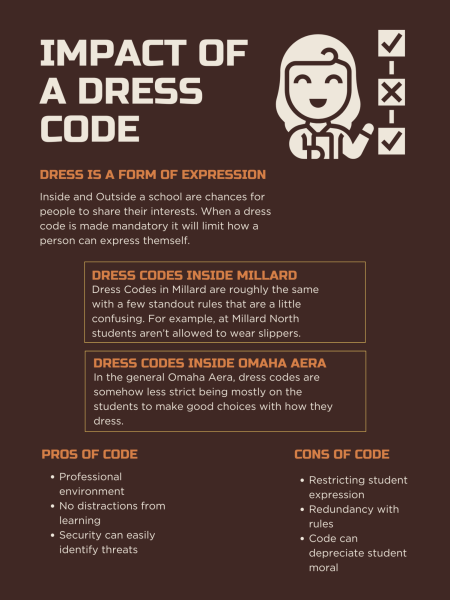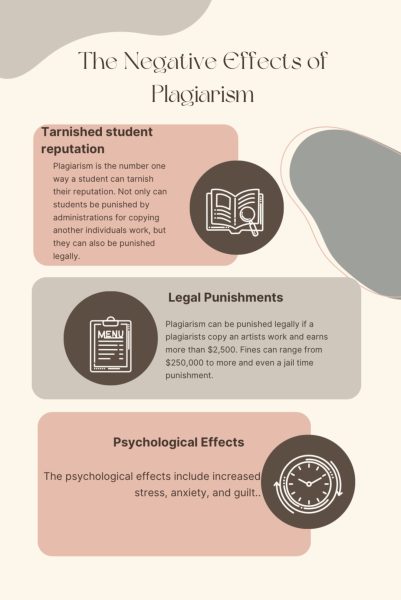Test-optional fixes admissions
Standardized testing is outdated and discriminatory
Each year, a new group of students flock into testing rooms to take the ACT or the SAT. This chart shows the SAT scores of students in relation to the amount of income of their family. There is about a 20 point gap between each level except for the first two and last two groups. In both of those areas, there is about a 100 point leap.
October 3, 2019
When it comes to college, it seems like there are about a million things needed to obtain a single letter of acceptance such as getting involved, taking challenging courses and keeping a high GPA. However, everyone is also supposed to devote hours of time to study for tests that aren’t even an effective measure of how well someone will do in college. The ACT/SAT tests are deciding of whether a person will get accepted into schools or not. Such exams should not be the defining factor of a student and universities should strongly consider switching to a test-optional admissions policy.
These tests aren’t a candid measure of academic success, especially when the common pattern is children from low-income families do worse than children from high-income families and cheating techniques are common. In a chart published by the Washington Post, it was shown that students from families earning over $200,000 a year averaged a combined SAT score of 1,714 while students from families earning less than $20,000 a year only averaged 1,326. These families also get more access to resources such as top-notch tutors, test prep and other enrichment activities. Students from a lower income households do not have the opportunities to get fancy tutors or attend schools with lots of financial resources which puts them at a disadvantage when taking the ACT/SAT.
It is not uncommon for the wealthy to take advantage of such exams. One of the most recent scandals regarding the College Board was Operation Varsity Blues in which dozens of parents, test administrators and coaches were involved in trying to rig the college admissions process. These parents were willing to pay large bribes in order to get their children into elite colleges. They used tactics such as hiring impersonators to take the tests, filing fake “disability” claims to gain extra time, paying to change wrong answers and bribing administrators to ignore illegal acts. With the corruption apparent in the College Board system, it is insane a certain number on these exams can determine whether a person gets admitted or rejected from a college. ACT/SAT testing seems more like a slimy, filthy scheme rather than a way to demonstrate knowledge.
With more universities going test-optional, the diversity among college campuses is also increasing. In a study led by Steve Syverson, an Assistant Vice Chancellor at the University of Washington Bothell, it was found that colleges enroll more low-income and first-generation students and people with diverse backgrounds. According to Forbes, in the Defining Access: How Test Optional Works study that was done in 2018, all but one out of 28 colleges examined saw substantial increases in minority, low-income and first-generation-to-college applicants.
The standardized testing done by most high-schoolers cannot show what learning obstacles a student has to go through or the disadvantages they were born with. All it is effective at determining is the amount of income and privilege a family has. By eliminating these tests altogether, the application process becomes more honest and college campuses across the globe become more diverse.
Despite all the facts, many schools and the College Board itself still work hard to promote the importance of the ACT/SAT. Most still see it as an easier way for colleges to compare data from each student which would make the application process smoother. However, by not submitting test scores, college admissions teams could focus on other parts of the application such as personal essays, clubs, activities and other test scores such as AP exam scores.
A good start to fixing the application process would be to make all schools test-optional and focus instead on other aspects of a student’s portfolio. There is much more to a person rather than one day of their life and one standardized test. The system is designed to keep elite families at the top and people of a lower socio-economic status at the bottom. To truly keep the integrity of the university structure in America, the entire admissions process needs to be revised.

















